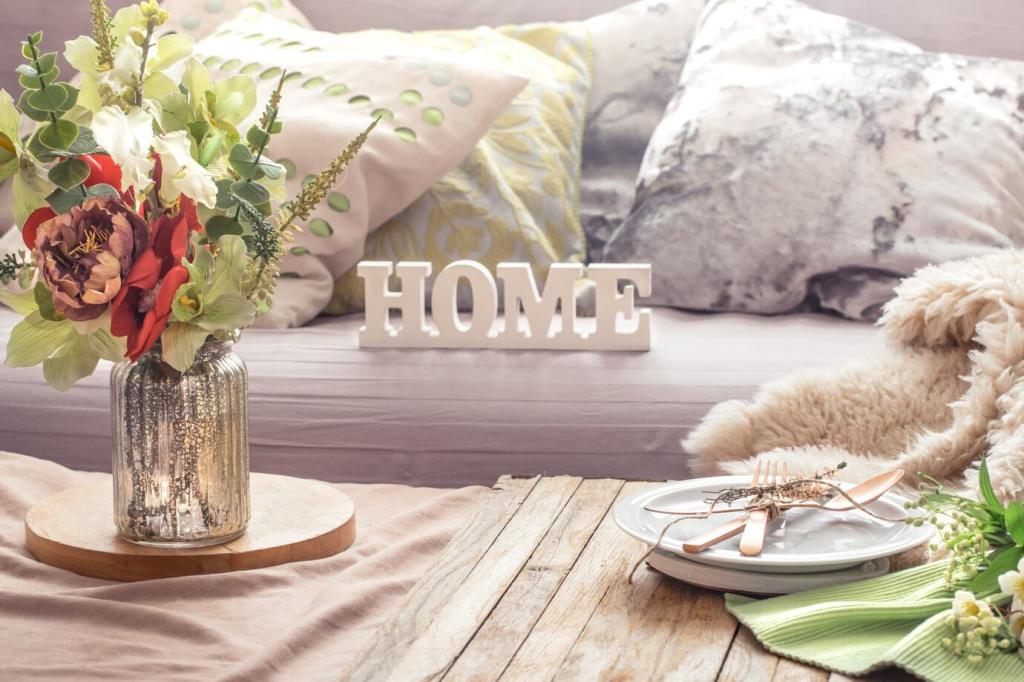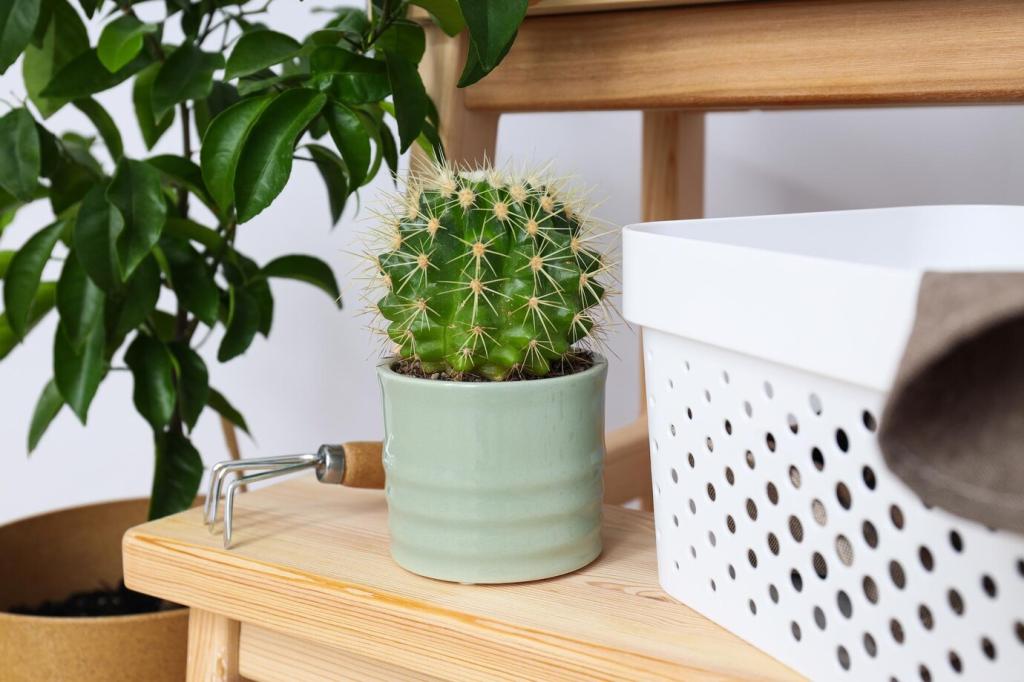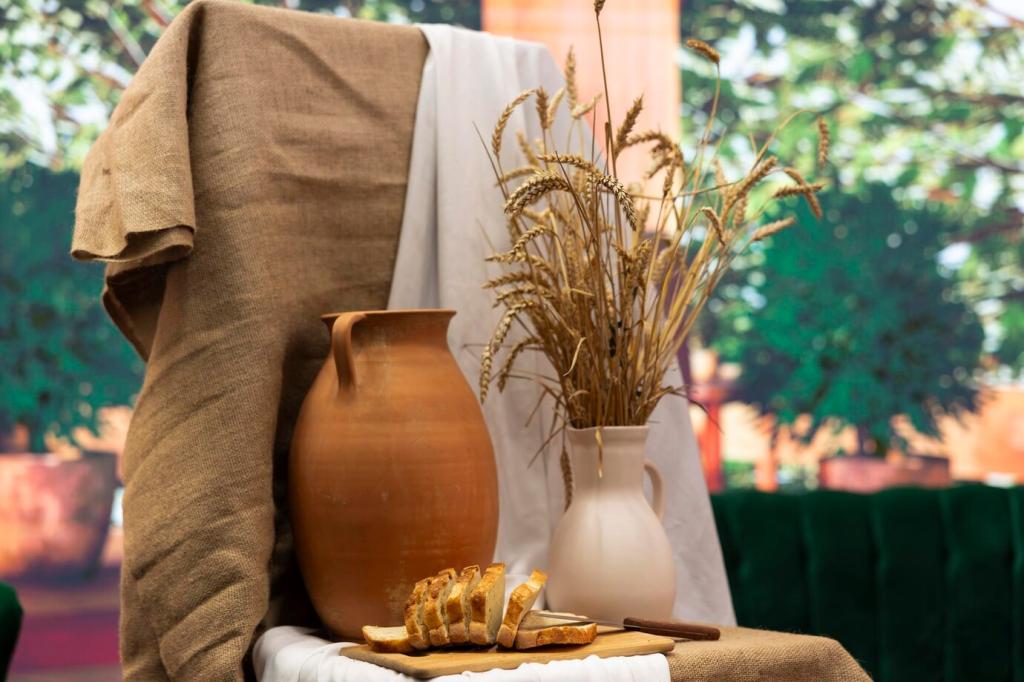
Eco-Friendly Materials for Modern Interiors
Designing modern interiors with sustainability in mind is no longer just a trend—it’s a necessity for the health of our planet and our own well-being. Eco-friendly materials are making significant strides within contemporary design, offering both style and substance. Emphasizing renewable resources, minimal environmental impact, and healthier indoor environments, these choices are transforming residences and commercial spaces alike. Discover the materials and innovative approaches that can redefine your interiors while supporting a greener future.

Certified Sustainable Wood
Certified sustainable wood comes from forests managed with long-term health in mind. Organizations such as the Forest Stewardship Council oversee these practices to guarantee responsible harvesting. Using certified wood products in interiors results in beautiful, unique surfaces and structures, all while safeguarding delicate ecosystems and supporting ethical forestry.

Bamboo: Rapidly Renewable Resource
Bamboo stands out for its extraordinary growth rate, maturing in just a few years compared to decades required by traditional hardwoods. Its adaptability to countless interior applications—flooring, wall panels, cabinetry—makes it a favorite among designers prioritizing both ecological responsibility and aesthetic flexibility.
Natural Stone and Recycled Surfaces
Low-Impact Natural Stone
Natural stone such as granite and marble, when responsibly quarried, embodies endurance and timeless beauty. Mindful suppliers use efficient extraction practices that minimize site disruption, fostering environmentally sound options for stylish modern interiors without compromising on quality.
Recycled Glass Surfaces
Recycled glass countertops and tiles blend post-consumer glass fragments into new, stunning surfaces. These products divert waste from landfills and are available in a range of colors and finishes, bringing vibrancy and individuality into modern interior palettes while reducing resource extraction.
Composite Recycled Materials
Composite surfaces crafted from recycled paper, plastics, and resins present a durable alternative for modern interiors. Brands specializing in these materials ensure VOC-free manufacturing processes, resulting in robust finishes suited for kitchens, bathrooms, and high-traffic living areas with clear sustainability benefits.

Upcycled and Repurposed Decor Elements
Repurposed Industrial Objects
Industrial relics, from factory lighting fixtures to machinery components, can be reborn as striking furniture or art pieces. By incorporating these elements, modern interiors gain a sense of history and grit, while their reuse curbs waste and reduces the carbon footprint of manufacturing new decor.
Salvaged Architectural Fragments
Corbels, railings, doors, and windows retrieved from historic renovations anchor new construction with character and craftsmanship. The careful integration of salvaged architectural details weaves resourcefulness into design narratives, marrying the past’s artistry with today’s eco-friendly intentions.
Textile Upcycling in Soft Furnishings
Textile waste can be transformed into beautiful, original rugs, cushions, and throws. Designers collaborate with artisans to upcycle vintage fabrics, remnants, or even discarded clothing, showcasing imaginative resourcefulness that adds both comfort and unique style to contemporary interiors.
Green Insulation and Acoustic Solutions
Sheep’s Wool Insulation
Sheep’s wool is a renewable, biodegradable material renowned for natural thermal regulating properties. Its ability to absorb moisture without losing insulation value, coupled with excellent sound absorption, makes it a compelling, chemical-free alternative for cozy, quiet interiors.
Cellulose and Recycled Insulation
Cellulose insulation, repurposed from newspapers or denim, keeps homes snug while diverting substantial waste from landfills. Favorable for both retrofitting and new builds, this option offers robust fire resistance and strong soundproofing, supporting improved building performance with minimal new resource input.
Cork Acoustic Panels
Harvested from the bark of cork oak trees, cork is a lightweight, sound-dampening material that regenerates after harvest. Its natural resilience, anti-microbial properties, and warm visual appeal enhance the sensory quality of modern interiors striving for both peace and eco-awareness.
Eco-Conscious Flooring Solutions
01
Linoleum, composed of linseed oil, cork dust, and wood flour, predates synthetic vinyl but offers modern performance with enhanced sustainability. It is naturally antimicrobial and biodegradable, making it suitable for kitchens, bathrooms, and high-traffic areas in contemporary homes.
02
Recycled rubber flooring repurposes old tires into resilient, slip-resistant surfaces well suited for workout areas or children’s playrooms. This tough, cushioned flooring contributes to waste reduction and creates comfortable underfoot support with a range of modern design possibilities.
03
Engineered wood built with layers of sustainably harvested timber guarantees both stability and eco-friendly credentials. Floors marked with certification logos ensure traceability from responsibly managed forests, blending beauty, strength, and conscientious sourcing for any room.

Low-Impact Fabrics and Textiles
Grown without synthetic pesticides or fertilizers, organic cotton and linen promote healthier ecosystems. These naturally breathable textiles are perfect for bedding, window treatments, and upholstery, offering understated luxury, gentle touch, and lasting resilience in modern eco-conscious interiors.
